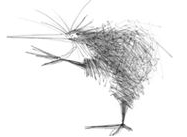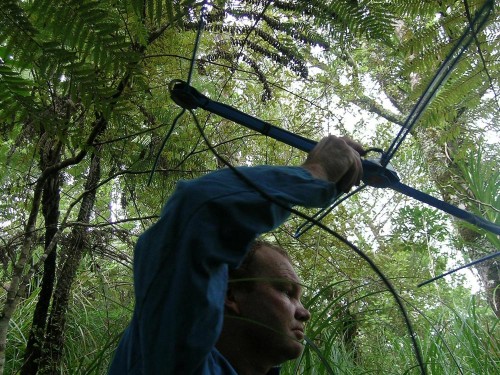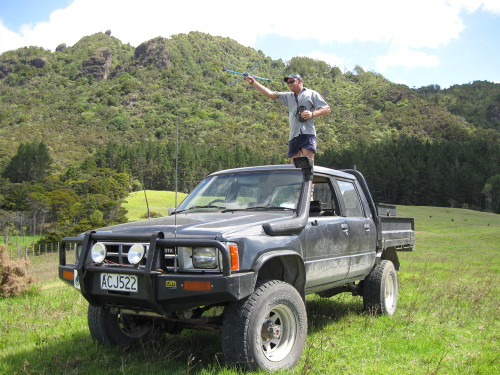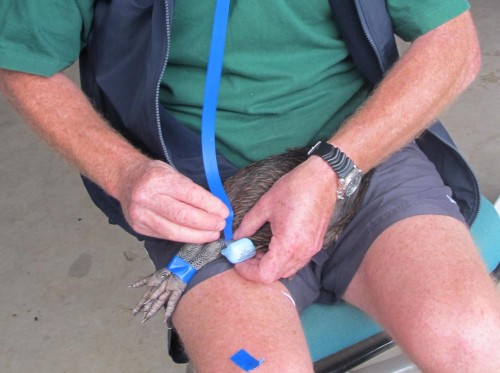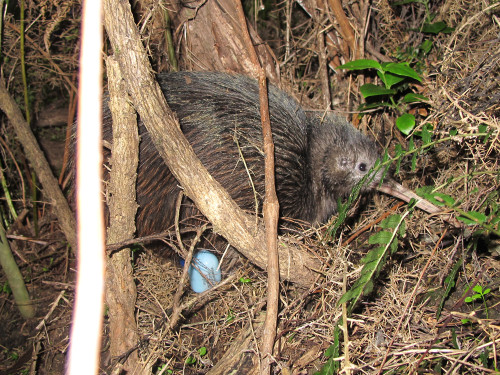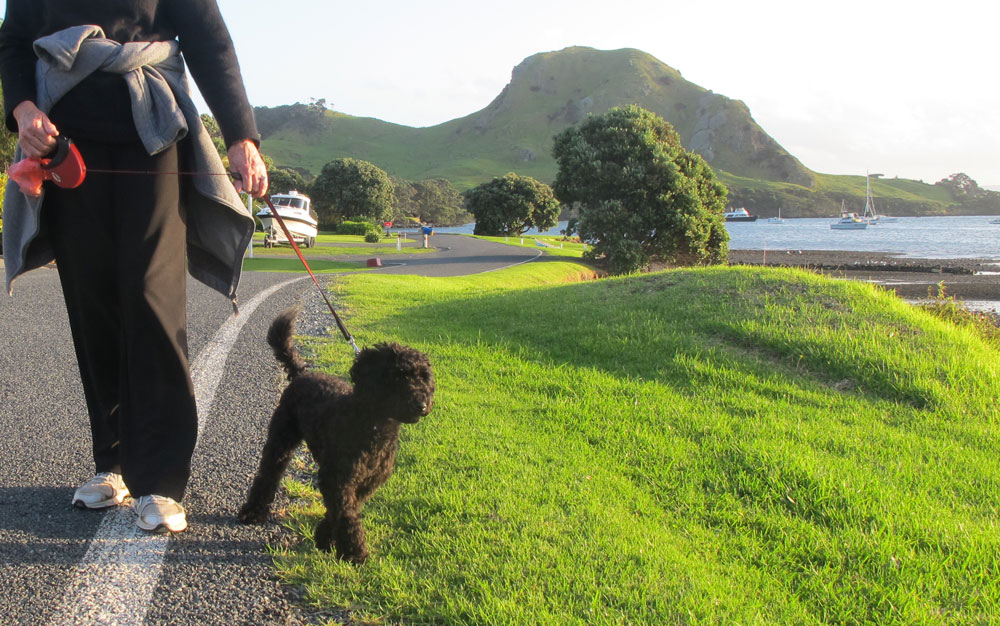At Whangarei Heads we have over 900 adult free ranging kiwi. A small sample have a radio transmitter attached to a leg, which we use to monitor their location and get information about growth, survival and breeding rates. All the scientific data collected is contributed to the national DoC data base for research.
Using chick timer technology tells us the bird’s nightly activity and shows when birds are nesting and when chicks hatch. This information can be accessed from the data stream the transmitter sends out.
So when you see Todd on the side of the road with his aerial out – he is counting beeps from the data stream. This is a fantastic way to keep people updated on what their kiwi are doing in their backyard. This system gives maximum information with minimum handling of the birds.
Backyard Kiwi monitors a sample of kiwi at Whangarei Heads. These kiwi are just a tiny sample and they have given us an invaluable insight into their lives and the lives of their fellow birds. Each of the tracked kiwi has a name and its own unique story. You can read more about them on our kiwi profiles page or see what they’re doing at the moment on the monthly map.
The monitored kiwi are tracked using a small radio transmitter that is attached to their ankle like a bracelet. Each transmitter is the kiwi’s individual radio station: for example, Dallas, who nests in Taurikura, is on channel tx 36 (‘tx’ is shorthand for transmitter), and his tx tends out a beep signal on that channel. The tx bracelets are light and strong, and are attached to the kiwi’s leg with a baby band, like those used in hospitals, and reinforced with a few rounds of electrical tape. The kiwi soon get use to the tx and carry on their business as usual.
Once the TX is attached, we can follow a kiwi’s movements by by tuning into its radio channel and using a directional aerial (like an old TV aerial) to find out where he is. The tx’s contain a mercury switch that senses movement through the kiwi’s leg, and we can tell from different kinds of beeps how active the kiwi is, which tells us things like when a kiwi is nesting or looking for new territory. If there is no movement for 24 hours the tx signal changes to a rapid beep (a mortality signal) meaning the tx has either fallen off or the kiwi is dead.
Todd Hamilton does the kiwi tracking for Backyard Kiwi, and he checks in on all of our monitored kiwi every month. The information he gathers from the transmitters is what you read about in our monthly maps and updates. Todd has gathered a huge resource of information by monitoring kiwi at Whangarei Heads, and what we’ve recorded is invaluable for our collective understanding in New Zealand.
When we began tracking kiwi, the information collected on the transmitters soon told us that there was a wandering dog problem at Kauri Mountain. Without the transmitters, we would never have known where dogs were killing kiwi in the wild. We now have far fewer deaths from dogs because the local community have become much more aware of the need for good dog control – in part through the awareness of locals of the fact that they have kiwi in their backyard, and by radio monitoring some of kiwi.












